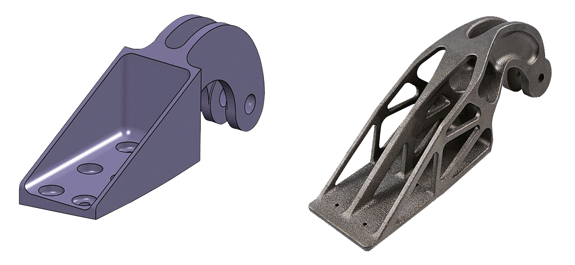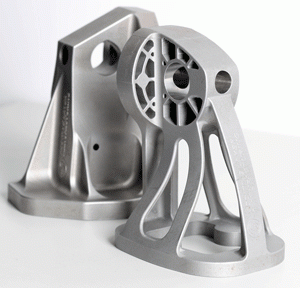Additive Manufacturing study shows cuts in material consumption and reduced CO₂ emissions
December 4, 2013
EADS IW has been using EOS Additive Manufacturing to evaluate the major factors which influence the decision-making process for design and manufacturing solutions. These include quality, costs and environmental effects which form part of EADS’s new Technology Readiness Level (TRL) focusing on sustainability.
Protection of the environment is said to be a key driver, while a reduction in the costs of manufacturing and operating its aerospace products also underlies the group’s research. Nine TRL processes must be passed at EADS before a technology can be qualified for use in production. For each TRL review, a technology’s level of maturity is evaluated in terms of performance, engineering, manufacturing, operational readiness, value and risk. For each of these criteria, new components must out-perform existing ones.
The results from the initial joint study of AM were evaluated in terms of CO₂ emissions, energy and raw material efficiency and recycling. When analysing energy consumption, the EADS’s investigation included not only the production phase, but also the sourcing and transportation of raw materials, argon consumption for the atomisation of the DMLS metal powder, and overall waste from atomisation.
An assessment by EADS IW highlighted, amongst other things, the potential cost and sustainability benefits of DMLS during the operational phase in the redesign of Airbus A320 nacelle hinge bracket. The data was backed up by test results from EOS and, in an additional step, by test results from a raw material (powder) supplier.

Fig.1 Conventionally designed and produced cast steel nacelle hinge bracket for an Airbus A320 (top) and optimised titanium version of the nacelle hinge bracket made by additive manufacturing technology from EOS
In the first instance, cast steel nacelle hinge brackets were compared to an AM bracket of optimised titanium design (Fig.1) by measuring the energy consumption over the whole life cycle. The technology turned out to be a good fit for the design optimisation, as for this application the operational phase is typically 100 times more important than the static phases (e.g. manufacturing the part).

Fig.2 Further example of improved part design
using additive manufacturing: prototype of an
optimised Airbus A380 bracket made from stainless
steel powder, with conventional bracket behind
A comparison was made between manufacturing the optimised titanium component by rapid investment casting and on an EOS platform. Energy consumption for the life cycle of the bracket, including raw material manufacture, the production process and the end-of-life phase, is slightly smaller on the EOS platform compared with rapid investment casting. The main advantage of the EOS technology, however, is that the additive process uses only the amount of material for manufacture that is in the product itself. Thus consumption of raw material can be reduced by up to 75%.
The study focused on the comparison between AM and rapid investment casting of a single part, and did not take into account the question of scalability, which has yet to be addressed. However, some impressive results were documented.
The optimised design of the nacelle hinge bracket allowed EADS and EOS to demonstrate the potential to reduce the weight per aircraft by approximately 10 kg, a significant amount in aviation terms. CO₂ emissions as a result of the brackets were reduced by almost 40% over their life cycle by optimising the design, despite the fact that the EOS technology uses significantly more energy during manufacture.
Jon Meyer, ALM Research Team Leader at EADS IW stated, “Additive manufacturing has demonstrated a number of benefits, as it can support design optimisation and enable subsequent manufacture in low volume production. A key driver of the study was the integrated and transparent cooperation between customer and supplier, with an open approach that saw an unprecedented level of information sharing.”
Useful links
To submit news and articles for publication on Metal Additive Manufacturing email us at [email protected]
Metal-AM homepage | Latest News | Articles | Subscribe to our free e-newsletter
















